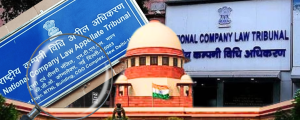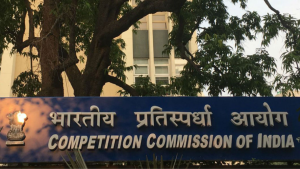

- November 21, 2023
- Pratik Kumar
Government Litigation And The Need For A Robust Litigation Policy/Act
Introduction
In its 2020-21 edition, the Economic Survey of India highlighted the sheer scale of ‘wasteful litigation’ being fought by the Government of India. To be sure, this was not the first time that a government report underlined this issue. In its chapter related to taxation-related litigation, the survey noted with a sense of concern that even though the Government loses 73% of all its cases in the Supreme Court of India, and a staggering extent of nearly 87% of cases in the High Courts, it does not prevent the policymakers from appealing its cases as a matter of routine. The abovementioned data, although just a tiny part of all the government-related cases, speaks a volume about the overall trend of government litigation. While the same may seem shocking, it is necessary to place the caveat that this indicative data is limited to the Central Government alone and does not even cover the litigation being conducted by the States along with numerous governmental bodies and PSUs.
For a long time, long lists of reports and studies on the issue of Government litigation have been published by various entities. However, nearly all of them have found it hard to tackle the ever-increasing tendency to pursue litigation in successive stages inside the various Government departments. Notably, drawing on such reports, the Government of India circulated a note proposing a national litigation policy (hereinafter NLP) in 2011 to streamline the conduct of Government litigation. After due deliberations and even after secretarial approval of the same, the Government decided not to bring it into force. The resultant effect is that India lacks a sound National Litigation Policy while different State Governments have brought litigation policies and rules that govern the conduct of their Government litigation.
A Statistical Overview Of Government Litigation In India
On 23rd July 2023, the Union Law Minister informed the Lok Sabha that although the Union Government is a major party in courts, it does not collect data regarding the percentage of cases where it is a party. Further, in the same reply, the minister also clarified that expenditure on such cases and department-specific data (to check the concentration of cases at a specific level and court) is also not collected. Instead, he cited the data uploaded on the LIMBS portal which shows some interesting patterns. The Ministry of Finance, Railways and Labour contribute more than half of the total caseload (Nearly 3,70,000 cases out of a total of 6,36,000 cases) as reported by the portal. Moreover, the data retrieved from the portal shows an irregular trend in terms of expenditure incurred by the Union Government. While the expenditure in 2018-19 was nearly ₹51 crore, it stood at ₹54 core in 2022-23. Further, it went as high as ₹60 crores in 2019-20. Additionally, it is also not clear whether this data includes the litigation that involves PSUs. It probably does not because of the Union Government’s response in the Lok Sabha in 2012 which says that the Department of Public Enterprises does not maintain the data on litigation-related expenditure of PSUs.
It is worth noting that the LIMBS portal contains the data of only the Union Government and solely relies on user inputs given by ministries and their advocates. Genuine concerns have been flagged about its reliability due to late and incomplete updation of data which is mainly done by the advocates engaged in cases. What is particularly interesting is that on 17th March 2023, the erstwhile Union Law Minister quoted a figure involving cases where the Government is a party (Apparently all tiers of government). It is unclear how the Union Government arrived at that figure since later this year it claimed that it does not keep data on the percentage of cases that involve the Government as one of its parties.
Measures Being Taken
At the union government level, it is unclear whether the government follows any cohesive policy to manage cases in the absence of a uniform National Litigation Policy. The response of the Government in the house suggests that the current approach is to deal with the issue on a departmental level according to their specific needs. For instance, departments such as the Central Board of Direct Taxes have increased the monetary threshold for filing cases before various forums. Similarly, Railways Ministry relies on departmental meetings and circulars for better monitoring of cases. While there seems to be some merit in these measures, they fall far short of achieving the goal of streamlined government litigation.
As far as the NLP is concerned, the government has not put any timeline for its formulation. In 2017, in a statement by the Ministry of Law and Justice, it was stated that the Law Commission’s report is being examined by the Ministry to chalk out the NLP. Since then, the matter has been put in cold storage. In the meanwhile, NLP 2015 and 16 were drafted but they were not brought into effect. Finally, during one of the secretarial level meetings on 14.09.2017, the committee of secretaries recommended that the intent of reducing litigation can be optimally achieved through simplified guidelines at a departmental level rather than formulating a National Litigation Policy. However, in light of the data, it appears that those simplified guidelines have not achieved any substantial progress in terms of moderating the litigation.
Do We Need Old-Fashioned NLP?
From the discussion and trends hereinabove, it can be assumed that in substance, such policies would be nothing more than a broad set of guidelines that would lack an accountability mechanism or a robust workflow mechanism. This claim gets substance from three developments post-2010 when NLP was formulated. Firstly, most of the states have adopted their litigation policy which is modelled on the inoperative NLP, thus containing only broad and general directions like the NLP. Barring a few states such as Karnataka or Maharashtra, most of the policies adopted by the states lack a sharp roadmap to tackle delays in the cases. Secondly, after the introduction of the LIMBS portal, departmental supervision of the cases has already been achieved (albeit not as effective as it was proposed). Therefore, it would be trite to include the guidelines for departmental supervision in a litigation policy. Thirdly, the Union Government itself has reinstated again and again that the proposed policy contains general directives given in the CPC and the CrPC. Therefore, rather than proposing something new, such documents stick to the advocacy of ADR and the idea of departmental supervision in general.
Conclusion
Much has been spoken about by different studies on the attitude of the Government officers and their callous pursuit of litigation over dispute settlement. While they do have a cause in many cases, it is equally true that they hamper the goal of minimising the government’s role in public lives. In its National Legal Mission, the Union Government had set the target to bring the average pendency time from 15 years to 3 years. However, with no visible reduction from the side of the Government itself, it is difficult to achieve the target even in diluted form.
More concerning is the fact that the states do not have any concrete plan (other than their overbroad policies) to solve this issue and they continue to remain embroiled in a large number of cases. Therefore, it is the need of the hour to relook at the development of sound litigation-abating policies by different state Governments that are in tune with the ground realities. To provide some input and reflect on the same, in the next post of this blog series, we will look at the similarities and differences among the different policies of major states.
RECENT ARTICLES


Testing the Waters: Pre-Implementation Evaluation of the 2024 CCI Combination Regulations

Not Quite Rocket Science

Administration of justice needs an Aspirational Gatishakti

-
Rule of Law ProjectRule of Law Project
-
Access to Justice SurveyAccess to Justice Survey
-
BlogBlog
-
Contact UsContact Us
-
Statistics and ReportsStatistics and Reports
© 2021 DAKSH India. All rights reserved
Powered by Oy Media Solutions
Designed by GGWP Design
